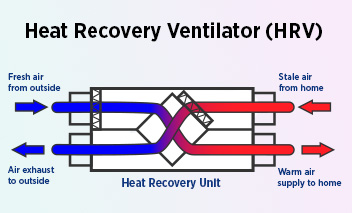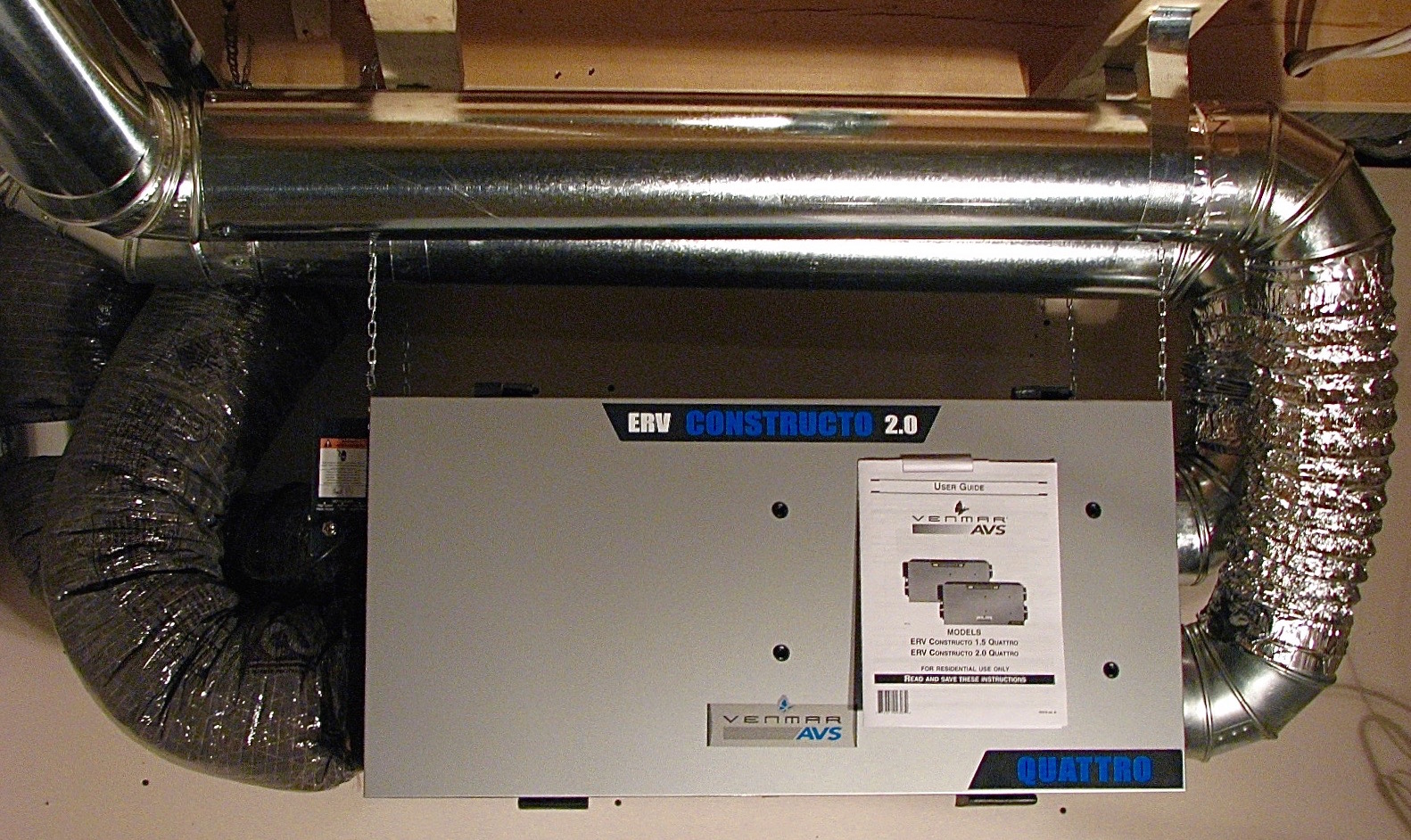The All-Inclusive Overview to the Uses of Heat Recovery Ventilation in Modern Structures
Heat Recovery Ventilation (HRV) systems stand for a considerable improvement in building technology (HRV Heat Recovery Ventilation). They supply a method for exchanging stale indoor air with fresh exterior air while lessening energy loss. This method not just boosts indoor air high quality yet additionally adds to power efficiency in both domestic and commercial buildings. Understanding the various applications and advantages of HRV can expose its critical function in modern design and sustainability initiatives. The ramifications of this technology deserve discovering further
Recognizing Heat Recovery Ventilation Equipments

Many contemporary buildings prioritize energy efficiency, recognizing warmth healing ventilation (HRV) systems is vital for maximizing indoor air high quality and minimizing power usage. HRV systems work by transferring heat from stale interior air to incoming fresh air, effectively keeping comfortable indoor temperatures while reducing energy loss. These systems include a heat exchanger, fans, and ductwork that facilitate the blood circulation of air. During winter season, HRV systems catch and reuse heat from the outward bound air, while in summertime, they can aid cool down incoming air. By continually trading air, HRV systems also lower moisture and the focus of indoor pollutants. Correct setup and maintenance of HRV systems are essential for their performance and efficiency in improving total building efficiency and convenience.
Benefits of Heat Recovery Ventilation
Heat recovery ventilation systems supply numerous benefits that improve both power effectiveness and indoor air quality in modern-day structures. By capturing and reusing power from exhaust air, these systems substantially lower heating & cooling prices, resulting in lower energy intake. In addition, they preserve a steady flow of fresh outdoor air, lessening the risk of indoor air toxins and irritants. This continuous exchange aids control moisture degrees, preventing mold development and guaranteeing a much healthier living environment. Furthermore, HRV systems add to sustainability goals by lowering general carbon impacts. Their ability to enhance air flow without giving up thermal convenience makes them a valuable addition to contemporary structure design, promoting both financial and environmental advantages.
Applications of HRV in Residential Buildings
As homeowners increasingly prioritize power performance and indoor air high quality, the applications of heat recovery air flow (HRV) systems in residential structures have ended up being more prevalent. HRV systems are especially helpful in firmly secured homes, where keeping fresh air blood circulation is crucial for avoiding dampness build-up and interior pollutants. They efficiently transfer warmth from outward bound stagnant air to inbound fresh air, lowering power costs connected with home heating and cooling. In addition, HRVs can boost comfort levels by regulating moisture and temperature level. They are additionally adaptable for various household styles, including single-family homes and multi-unit structures. Generally, integrating HRV systems supports lasting living practices while guaranteeing a healthier interior setting for occupants.
HRV in Business and Industrial Settings
In industrial and commercial setups, the application of warm recuperation air flow (HRV) systems has actually become increasingly crucial for optimizing energy effectiveness find out and preserving air high quality. These systems effectively move warm from exhaust air to inbound fresh air, decreasing the need for extra home heating or cooling. This not just decreases energy costs but additionally adds to sustainability campaigns. Industries such as production, warehousing, and office structures benefit significantly from HRV systems, as they help manage temperature and humidity levels, making certain a comfortable and efficient setting. Moreover, HRV systems aid in removing impurities and excess dampness, boosting indoor air quality. As laws around air quality end up being more stringent, the fostering of HRV technology is likely to grow, making it an important component of modern-day business and commercial facilities.
Future Trends in Heat Recovery Ventilation Technology

Regularly Asked Concerns
How Does Heat Recovery Ventilation Impact Indoor Air Quality?
Heat recovery ventilation greatly enhances indoor air quality by constantly exchanging stale indoor air with fresh exterior air while recovering energy. This procedure reduces contaminants, maintains ideal moisture degrees, and ensures a much healthier setting for passengers.
Can HRV Solutions Be Mounted in Existing Structures?
HRV systems can undoubtedly be installed in existing structures. Retrofitting might require alterations to ductwork and air flow formats, but it substantially improves power performance and interior air high quality, making it a viable alternative for older frameworks.
What Maintenance Is Needed for HRV Equipments?

Are There Certain Climates Where HRV Is More Efficient?
Heat recovery ventilation systems are particularly efficient in environments with substantial temperature differences between seasons. These systems optimize energy official statement efficiency by recuperating warmth from exhaust air, making them ideal for both cool and moderately warm atmospheres.
Exactly How Do HRV Solutions Affect Power Bills?
